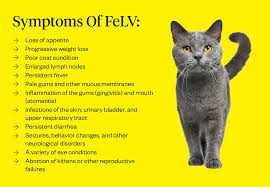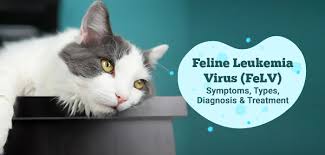Feline Leukemia Virus (FeLV) is a retrovirus that infects cats and can lead to severe immunosuppression, anemia, and lymphoma. It primarily spreads through saliva, but it can also be transmitted via blood, urine, feces, and milk from an infected mother cat to her kittens.
Feline Leukemia Virus (FeLV) is one of the most common and potentially deadly infectious diseases in cats. It affects the cat’s immune system, making it more susceptible to other infections and diseases. This comprehensive guide will delve into the causes, symptoms, treatments, and prevention strategies for FeLV, as well as provide answers to frequently asked questions.
Stages of FeLV Infection:
- Primary Viremia: Initial infection stage where the virus enters the bloodstream.
- Secondary Viremia: If the cat’s immune system fails to eliminate the virus, it spreads to the bone marrow and other tissues, leading to persistent infection.
Common Symptoms of FeLV:
- Lethargy: Affected cats often become very weak and inactive.
- Weight Loss: Rapid and unexplained weight loss.
- Fever: Elevated body temperature.
- Anemia: Pale gums, weakness, and shortness of breath.
- Secondary Infections: Due to immunosuppression, cats may suffer from recurrent infections.
Causes and Transmission:
Modes of Transmission:
FeLV is primarily spread through:
- Close Contact: Grooming, biting, or sharing food and water bowls.
- Mother to Kittens: Infected mother cats can transmit the virus to their kittens through milk.
- Blood Transfusion: Rare but possible if the blood is contaminated with FeLV.
Risk Factors:
- Outdoor Cats: Cats that roam outside are at higher risk due to potential contact with infected cats.
- Multi-Cat Households: Increased risk of transmission in environments with many cats.
- Unvaccinated Cats: Lack of vaccination increases susceptibility.
Clinical Signs of Feline Leukemia Virus:
Early Signs:
- Mild fever
- Loss of appetite
- Swollen lymph nodes
Advanced Signs:
- Severe anemia
- Jaundice (yellowing of the skin and eyes)
- Persistent diarrhea
- Seizures and neurological symptoms

Diagnosis and Treatment of Feline Leukemia Virus:
Diagnosis:
Diagnosis is typically confirmed through blood tests, such as the ELISA test and the IFA test, which detect the presence of FeLV antigens in the blood.
Treatment:
There is no cure for FeLV, but supportive care can help manage symptoms and improve the quality of life:

- Antiviral Medications: These can help reduce the viral load.
- Antibiotics: To treat secondary bacterial infections.
- Blood Transfusions: For cats with severe anemia.
- Nutritional Support: High-quality diet to support overall health.
- For information about Feline Estrus Cycle [CLICK HERE]
Managing FeLV-Positive Cats:
- Regular veterinary check-ups to monitor health.
- Keeping the cat indoors to prevent the spread of the virus.
- Minimizing stress and providing a clean, comfortable environment.
Prevention Strategies:
Vaccination:
Vaccination is the most effective way to prevent FeLV. Kittens and at-risk adult cats should be vaccinated according to the veterinarian’s recommendations.
Testing and Isolation:
- Testing new cats for FeLV before introducing them to multi-cat households.
- Isolating FeLV-positive cats from uninfected cats to prevent transmission.
Hygiene and Sanitation:
Regular cleaning and disinfection of the cat’s living areas can reduce the risk of transmission.
Conclusion:
Feline Leukemia Virus is a serious condition that requires diligent care and preventive measures to manage. By understanding the causes, recognizing the clinical signs, and implementing effective prevention strategies, cat owners can help protect their feline companions from this debilitating disease. Regular veterinary care, proper vaccination, and maintaining a safe living environment are crucial steps in ensuring the health and well-being of your cat.
FAQs :
Q1: Can FeLV be transmitted to humans or other animals?
A1: No, FeLV is species-specific and cannot be transmitted to humans or animals other than cats.
Q2: How effective is the FeLV vaccine?
A2: The FeLV vaccine is highly effective but not 100%. It significantly reduces the risk of infection.
Q3: What should I do if my cat tests positive for FeLV?
A3: Provide supportive care, keep the cat indoors, and schedule regular veterinary visits. Discuss with your vet the best ways to manage the condition.
Q4: Can FeLV-positive cats live with FeLV-negative cats?
A4: It’s not recommended as it poses a high risk of transmission. FeLV-positive cats should ideally be kept separate from FeLV-negative cats.
Q5: How long can a cat live with FeLV?
A5: Life expectancy varies. Some cats can live for several years with proper care, while others may succumb to the disease within a few years.

